Manaka Hamono Tanrenjo
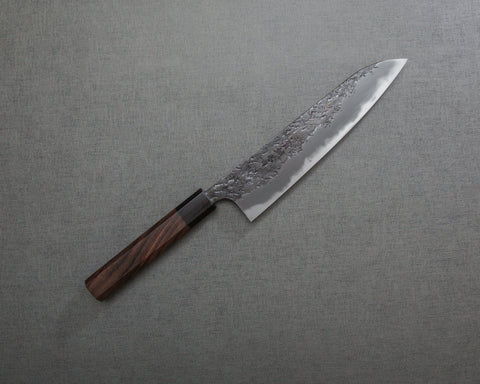
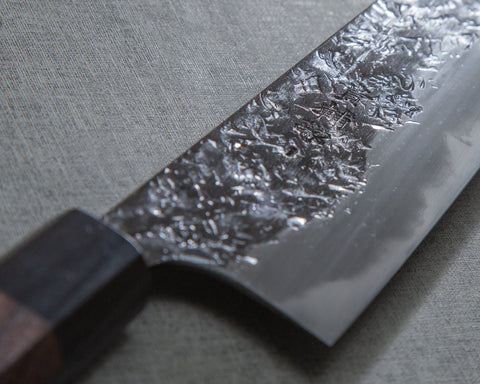
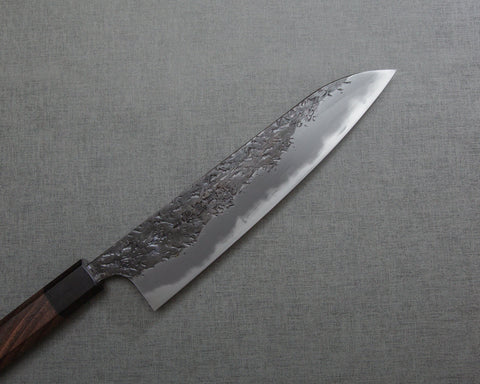
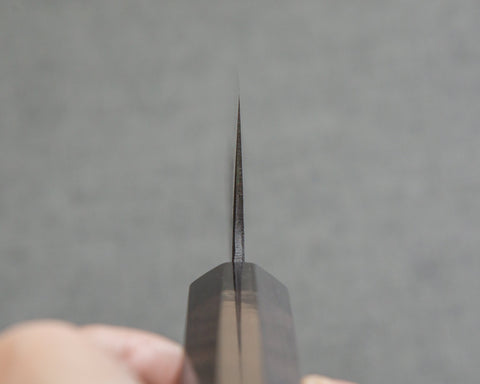
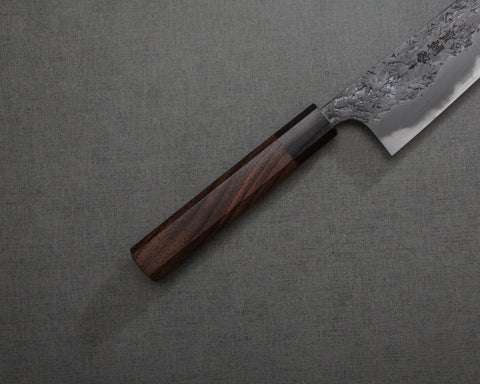
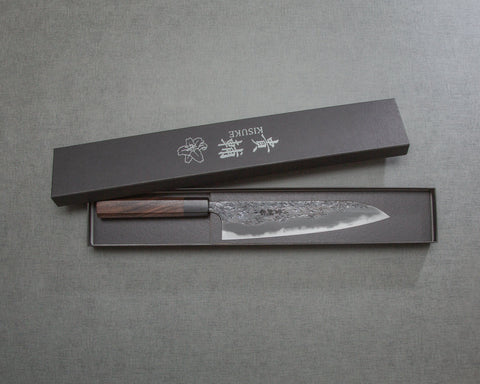
Kisuke Aogami #1 Hon-Warikomi Kurouchi Tsuchime Gyuto with Rosewood Handle
Pickup currently unavailable
This Gyuto is handcrafted by Kisuke Manaka with Aogami #1 steel core and soft iron cladding using Hon-Warikomi construction. Heat-treated to 64 HRC, the blade features a characterful kurouchi and hand-hammered Tsuchime finish. The beautiful edge geometry and distal tapering ensure a sleek cutting performance.
Spec:
- Origin (Made in): Kasukabe, Saitama Prefecture, Japan
- Brand: Manaka Hamono
- Craftsman: Kisuke Manaka
- Knife Type: Gyuto
- Blade
- Construction: Warikomi
- Grind: Double-edged Blade (50/50 Grind)
- Hagane (Core Steel): Aogami #1 (Blue #1)
- Jigane (Cladding): Soft Iron
- Hardness: 64 HRC
- Hand-forged, hand-grind, hand-sharpened
- Blade Finishes:
- Tsuchime (Hammered)
- Kurouchi
- Hon-Kasumi Polish
- Blade Length: 210mm (8.3")
- Blade Height (at heel): 48mm
- Spine Thickness
- Above heel: 2.9mm
- Middle: 2.0mm
- Handle
- Shape: Hachikaku (Octagonal)
- Material: Rosewood
- Kuchiwa: Black Pakkawood
- Length: 140mm
- Overall Length: 368mm
- Weight: 159g (5.61oz)
- Engraved Mark: In Japanese Kanji "Kisuke" (貴輔)
About Kisuke 貴輔 / Manaka Hamono 間中刃物鍛錬所
Kisuke Manaka is the 5th generation blacksmith at Manaka Hamono, a workshop founded in 1872 in Kasukabe, Saitama Prefecture of Japan. Kisuke Manaka did not inherit the workshop from his own family, instead he was married into the Manaka family, and eventually became a full-time, professional blacksmith. Since his father-in-law (the 4th generation Manaka) was more a retailer, he was not capable of teaching Kisuke Manaka any blacksmithing skills. Luckily, Kisuke Manaka’s grand-father-in-law (the 3rd generation Manaka) had left a lot of tools and equipment, as well as books and notes on blacksmithing, he was able to teach himself during the process, and had master Tsukasa Hinoura as his mentor.
Care:
Aogami #1 (Blue #1) steel is a premium Japanese high carbon steel for knife making. Despite some corrosion resistant quality (for a carbon steel), it is not stainless, therefore you should wipe your knife dry after each use. Patina will develop over time. Rust may develop if left in prolonged contact with water or acidic food. Use a rust eraser to clean if rusts develop. Avoid cutting into bones, frozen foods, hard fruit pits.
Cutting Surface:
Recommended cutting surface: wood, rubberized boards and high-end composites, and quality plastics such as polyethene make acceptable cutting surfaces, and will help protect and prolong knife’s edge. AVOID glass, metal, countertops, and other rigid, non-forgiving surfaces.
Sharpening:
We recommend sharpening all quality Japanese knives on whetstones, as we believe they yield the best results for your knives.
The knife was sharp out of the box and quickly became my favorite Gyuto. It seemed to dull after not that long. However, once I sharpened it on my own whetstone, that edge held for months and I'm only thinking about touching it up again now. I can recommend this knife for whenever it gets back in stock. If anything, I wasn't prepared for how big it is. Still, it's comfortable to cut with once you get used to it.
Free Shipping
Free Shipping on most orders.
30 Days Return
Return unused within 30 days for a full refund, no questions asked (terms apply).
Top Japanese Makers
All knives made in Japan by top Japanese knife makers.
About
Burrfection Store sources professionally designed sharpening products, and knives from top Japanese craftsmen.
